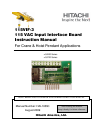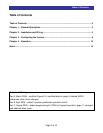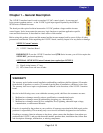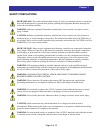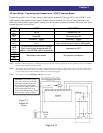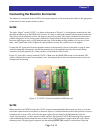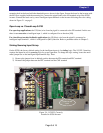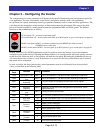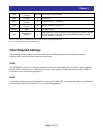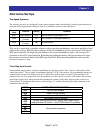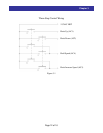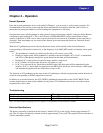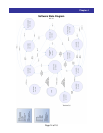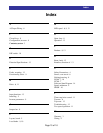
Chapter 3
Page 11 of 16
Alternative Set Ups
Two-Speed Operation
The inverter can easily be configured for two-speed operation rather than infinitely variable speed operation by
using the following parameter settings in lieu of or in addition to those in the table above:
Parameter
Code
Function Setting Comment
A021 Multi-speed 01 XX.X Desired second (high) speed, in Hz
C003
Terminal 3
Function
02 [CF1] function – multi-speed select bit 1
C004
Terminal 4
Function
255 [no] No function
This set-up is applicable to pendant stations with two-position pushbuttons, and can be applied to hoist
and/or traverse axes. With the above settings, at the first pushbutton position, the inverter will ramp to
MIN speed and hold. On depressing the button to the second pushbutton position, the inverter will
accelerate to the A021 speed and hold. Releasing the pushbutton back to the first position will cause
the inverter to decelerate back to the MIN speed and hold. Releasing the pushbutton will cause the
inverter to come to a stop.
Three-Step Hoist Control
Some pendant stations utilize 3-position pushbuttons for the hoist control. This is what is traditionally called
“three-step control.” This is simple to implement with the 115VIF-3 and inverter. No programming changes are
required in the inverter. The jumper from AC4 to HOT that would be used in normal 2-step operation is not
needed in this case. The output wire from the pushbutton second contact is wired to AC4 instead. The increase
speed input signal will be taken from the third pushbutton contact for this setup, instead of the second as in
2-step control. To implement this function, refer to Figure 3-1 and the following table which summarizes the
connections that are used:
INPUT THREE-STEP HOIST CONTROL
AC1
Up PB (first contact)
AC2
Down PB (first contact)
AC3
Increase speed (third contact)
AC4
Hold speed (second contact)
AC5
Up over-travel photo limit (NC sensor input; open-circuit
stops/prevents UP motion – only DOWN motion is possible)
AC6
NC
IN
GND
Not used/no connection



